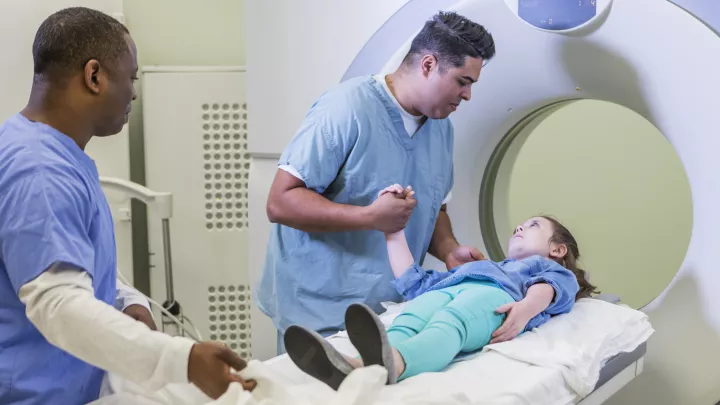
New Algorithm Helps ER Doctors and Trauma Surgeons Identify Children With Serious Neck Injuries
Cervical spinal injuries in children and adolescents are fortunately rare, but they can be serious, as they can lead to paralysis. Suspected injuries are diagnosed via X-rays and computed tomography (CT). But indiscriminate CT-related radiation can lead to cancers later in life. Emergency medical services (EMS), emergency department and trauma teams need better tools to determine which children have serious neck trauma needing spinal precautions, and which children have negligible injuries and don’t need the unnecessary radiation exposure.
The Pediatric Emergency Care Applied Research Network (PECARN)—a national consortium of pediatric emergency medicine practitioners—conducted a nationwide study resulting in a new clinical algorithm that has the potential to cut unnecessary CT scans by more than half.
“This clinical algorithm can help clinicians determine which children had serious neck injuries after blunt trauma,” says study coauthor Pradip Chaudhari, MD, Director of Research and Scholarship, Division of Emergency and Transport Medicine at Children’s Hospital Los Angeles. “Had we applied this novel algorithm to all 22,430 children in the study, the number of children who received CT scans might have been reduced from 17% to 7% of children without increasing the number of children receiving conventional X-rays.”
When the diagnosis can harm
Earlier this year, PECARN published a paper on appropriate use of CT scans to detect head and abdominal injuries in children who had experienced blunt trauma.
CHLA was one of 18 pediatric emergency departments contributing data to this research. The prospective observational study enrolled 22,430 children between birth and 17 years of age who arrived with known or suspected blunt trauma at a PECARN-affiliated emergency department. Of the entire study population, 1.9% were found to have cervical spine injuries. The primary outcome was confirmation of cervical spine injury within 28 days of initial trauma that justified either inpatient observation or surgical intervention.
“We don’t want to miss any potential neck trauma that could lead to poor outcomes,” says Dr. Chaudhari. “But we also want to avoid CT scan overuse that could potentially cause harm. Until this study, we’ve lacked the evidence to guide appropriate CT use in diagnosing cervical spine injuries in children.”
The study was completed at CHLA in collaboration with the CHLA Trauma Team. “This multidisciplinary approach supports future implementation by emergency care and trauma providers,” says Ryan Spurrier, MD, FACS, Director, Trauma Program.
Accurate risk assessment
The researchers used a combination of clinical factors associated with a high risk of cervical spine injury (>10%) with additional classification and statistical regression tree (CART) analysis. When these factors were combined to create a cervical spine injury prediction rule applied to the validation cohort, the algorithm performed with 94% sensitivity, 60% specificity, and with over 99% negative predictive value—which is the likelihood that this negative result means that the child does not have a cervical spinal injury.
“This clinical algorithm, because it is so rigorously derived and validated, can help clinicians determine which children are at risk for serious injury after blunt trauma,” says Dr. Chaudhari.
The PECARN study was published in The Lancet Child & Adolescent June 4, 2024.


